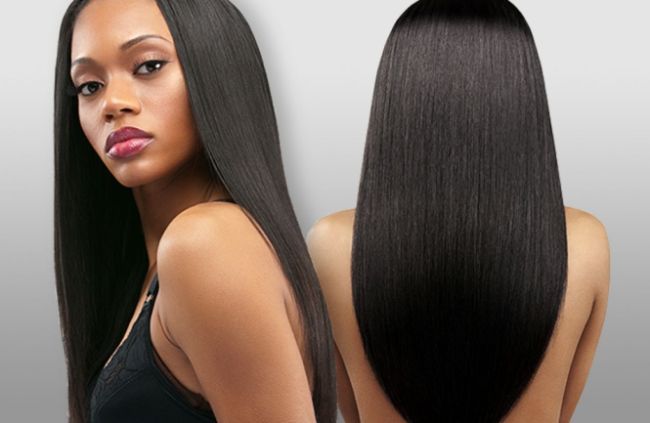There’s nothing worse than a weave that’s unkempt. As more and more women are opting for sew-ins, there’s more of a need to be educated on how to take care of them. A lot of times, different hair rules may apply when it comes to keeping your weave intact. Check out some great tips on how to take care of your extensions and the hair underneath.

1. Pick The Right Extension.
It all starts with the hair selection. If you’re an extensions newbie, you might want to go for a texture that mimics your own hair. It will make your life so much easier the first go-round. Also, do you want extensions that last two weeks or six weeks? Make sure you pick great quality hair that can give you the results you’re looking for.
2. Combing And Detangling.
It’s all in the technique. Don’t rip your comb through your weave! Remember that the tracks are sewn onto your hair. The more you pull and yank through the extensions, the more you can damage your hair. You don’t want your hair to fall out from tugging on the extensions. As you would with your own hair, always detangle from the bottom up and preferably while wet. Weaves can get tangled badly.
3. Wash Your Extensions.
You can’t wash your hair like you normally do. But make sure you wash your hair underneath too. Using a bottle with a nozzle attachment really helps. Add your favorite sulfate-free shampoo and mix with water. You can get the shampoo mix into all the different crevices and in-between your braids. After that, take your fingertips and lightly massage your scalp in between the braids. Rinse and repeat at least twice.
4. Leave-in Conditioner.
Apply a leave-in conditioner to the weave, and your natural hair, after each shampoo. A dime-sized amount of product should be enough. Massage it in with your fingers, coating the gently. For freshening up during these in-between times you don’t have to wash again, just apply the leave-in conditioner to the dry weave.
5. Dry Out Your Hair.
If you take anything from this, make sure you dry your hair completely when wearing a weave after cleansing it. When you wash your hair and your braids get wet underneath, if you don’t let your hair dry completely, your hair will smell like mildew. Sitting under a dryer and letting your hair completely dry will combat that horrid smell (and potentially mold).
6. Anti-Bacterial Weave Spray.
A weave that’s braided, twisted or worn in locks will take longer to dry than a weave that’s worn loose. This lengthy drying time leaves your weave susceptible to mold and bacteria—and that musty smell. Give your weave a light spritz daily to kill bacteria, detangle it and keep it fresh. Use the anti-bacterial spray once a day, working it gently into the weave with your fingertips.
7. To Scratch or Not to Scratch?
Don’t scratch with your fingernails, the end of a rat-toothed comb, or anything else that will irritate your scalp more. Your scalp can get scabs. Since you generally don’t wash your hair as much while wearing extensions, you may find that your scalp itches more than usual.
8. Secure Your Hair When Sleeping.
Secure your hair while you sleep. Hair pieces can become easily knotted or tangled at the installation place. Wear a large cotton bandana around your hair while you sleep to avoid excessive friction that might cause damage. Also, try sleeping on a satin pillowcase so not to disturb your weave.
9. Use Precaution During Styling.
Gather all of your hair into one hand while brushing with the other hand. This will ensure that you don’t cause stress at the installation point. Also, let your hair air-dry rather than using a blow-dryer, and avoid excess heat while using styling instruments. When heat is used, it’s best to always apply a heat-protective serum beforehand.
10. Remember To Take Care Of Your Scalp.
When wearing hair pieces it’s important to consider the care of your scalp, especially if you have a hair weave. Hair weaves are secured to your natural hair in a fashion that your hair is subjected to product buildup.









